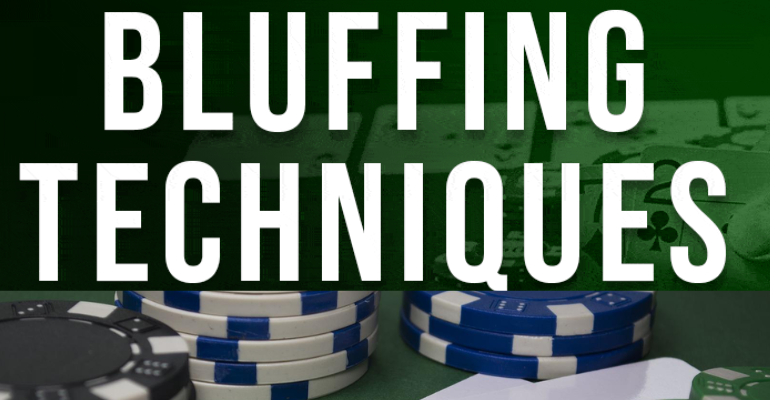Texas Hold’em Strategy: Top Tips You Must Know 2024

Welcome to the pulse-pounding world of Texas Hold’em, where knowing the latest Texas Hold’em strategy is your ace in the hole for 2024. Just like tech evolves, so does the game of poker. Staying ahead means more than just knowing the rules—it’s about mastering the game’s ever-changing tactics. From bankroll management to mastering the art of the bluff, we’re diving deep into Texas Hold’em strategies that will redefine your game style. Ready to up your poker game? Let’s get started!
TEXAS HOLD’EM STRATEGY & TIPS FOR 2024

Jumping into Texas Hold’em without a solid grasp of the fundamentals is like trying to bake a cake without knowing what flour is—you’re just not going to get the results you’re hoping for. As we step into 2024, the game’s evolving, and so should your strategy. Let’s break down a couple of essentials that are your bread and butter in the poker world. Given below are some Texas Hold’em strategy and tips for 2024:
UNDERSTANDING THE IMPORTANCE OF POSITION
Imagine you’re a spy. The information you gather is crucial, right? In poker, information is king, and your position at the table determines how much intel you have on your opponents. Like the dealer, being late means seeing how everyone else acts before you do. It’s like having a crystal ball that tells you whether to bet, hold, or fold. So, always remember that where you sit is as important as the cards you have.
BANKROLL MANAGEMENT
Let’s talk business about one of the most crucial aspects of poker that could make or break your game: Bankroll Management. It’s not the flashiest topic, but get this right, and you’re setting yourself up for long-term success. Here’s a Texas Hold’em strategy on how to play it smart:
Setting Limits
- Why It Matters: Imagine being on a roller coaster without a seatbelt. That’s what playing without limits feels like. Is it exciting? Maybe. Is it safe? Not.
- How to Do It: Set a limit for each session, day, and month. Stick to it like glue. This isn’t just about preventing losses; it’s about playing within your comfort zone so you can always bring your A-game.
Knowing When to Move Up Stakes
- Look for Signs: Moving up in stakes because you feel lucky is like trying to fly without wings – it won’t end well. Instead, look for signs like consistent wins over a significant period and a bankroll that’s beefed up enough to handle the ups and downs.
- Smart Steps: Don’t jump from the kiddie pool straight into the ocean. Gradually increase the stakes so you can adjust without the pressure of playing with all your savings on the line.
Bankroll management isn’t just about protecting your wallet; it’s about ensuring you’re in the game long enough to become the poker shark you’re meant to be.
Also Read: Best Poker Tips And Strategies You Must Know In 2024
ADVANCED PRE-FLOP STRATEGIES

Pre-flop is where the game begins; sometimes, the game can end, too. Getting your pre-flop strategy right sets the tone for the rest of the hand. Let’s get into the Texas Hold’em advanced pre-flop strategy:
Pre-flop isn’t just about the cards you’re dealt; it’s about the message you send to the table. You can control the game before the flop hits the felt if you play it right.
POST-FLOP EXCELLENCE

Congratulations! You’ve navigated the pre-flop phase like a pro. Now, you’re staring at the flop, and it’s time to make some decisions. Post-flop play is where the real poker begins. It’s not just about the cards; it’s about the story you tell and the moves you make. Let’s break it down:
Post-flop play is an art and a science. It’s about reading the board and your opponents and making the best move. With practice, you’ll start seeing patterns and opportunities others miss.
CONTINUATION BETTING
So, you’ve made it past the flop, and now you’re in the thick of it. The continuation bet (c-bet) is the tool you use in your arsenal. But when and how should you wield this powerful strategy? Let’s dive in:
Criteria for Effective C-Betting
- Board Texture: A dry board with fewer draws means your c-bet is more likely to succeed. Wet boards? Proceed with caution.
- Opponent Type: Against a tight player, your c-bet might easily take down the pot. Against a loose cannon? They might call you down with anything.
Adjusting to Opponent Types
- The Nitty Gritty: Monitor your opponents’ reactions to c-bets. Some fold too often (ideal targets), while others never seem to let a hand go (be more selective here).
TURN STRATEGY
The turn is where things get interesting. You’ve got more information now, but so does your opponent. How do you navigate these murky waters?
Assessing Board Texture Changes
- New Opportunities: A turn card can open new draws or strengthen your hand. Adjust your strategy accordingly.
- Know When to Hold ’em: Not every turn card is a green light to keep betting. Sometimes, it’s a sign to slow down and reevaluate.
Pot Control vs. Aggression
- Balancing Act: You want to build the pot when firm, but avoid inflating it when uncertain. It’s a delicate balance between protecting your hand and not overcommitting.
RIVER DECISIONS
You’ve made it to the river. This is where legends are made, and dreams can be dashed. The final card is out, and it’s decision time.
Identifying Value Bet Opportunities
- Maximize Winnings: If you’re confident you have the best hand, determine how much your opponent will pay to see it. It’s your last chance to increase the pot.
Recognising Bluffing Spots
- The Final Bluff: If you’ve got to the river with a busted hand, sometimes a well-timed bluff can steal the pot. But choose your moments wisely. A failed bluff here can be costly.
Mastering Texas Hold’em post-flop play, especially the finer points of continuation betting and navigating the turn and river, separates the great from the good. It’s about making the right moves at the right time and staying one step ahead of the competition.
Also Read: How To Play 5 Card Stud: Must-Know Rules & Strategies 2024
BLUFFING TECHNIQUES

Bluffing in Texas Hold’em is like being a magician, trying to convince your audience of something untrue. But instead of pulling a rabbit out of a hat, you’re trying to snatch the pot with less-than-stellar cards. Let’s unveil some of the mystique around bluffing:
Semi-Bluffing with Equity
- The Concept: Semi-bluffing is when you bluff with a hand that isn’t the best right now but has the potential to improve on later streets. It’s like having a backup plan when your main gig doesn’t work out.
- Why It Works: It puts pressure on your opponents while allowing you to win the hand if you get called. It’s a win-win.
The Art of the Overbet Bluff
- Going Big: Sometimes, betting more than the pot can scare your opponents into folding, even if they have a decent hand. It’s a bold move that says, “I dare you to call.”
- Risk vs. Reward: This move can be risky. If someone calls your bluff, it can be a costly lesson. Use it sparingly and only when you’re pretty sure your opponent is on the fence.
Bluffing Frequencies: Balancing Your Ranges
- Keeping Them Guessing: You become predictable if you bluff too often. Not enough, and you might miss out on easy pots. Finding that sweet spot where your opponents can never be sure what you have is vital.
- Mix It Up: Incorporate bluffs into your range to complement your value betting. This makes you a formidable opponent to read.
CONCLUSION
In conclusion, the success of Texas Hold’em depends on patience and playing strong hands well. Bet aggressively with substantial holdings, understand your position, sharpen your hand selection, and don’t be afraid to fold. Stay updated with the Texas Hold’em latest strategies and adapt to this ever-evolving game. Need more guidance? Stay tuned with us!






